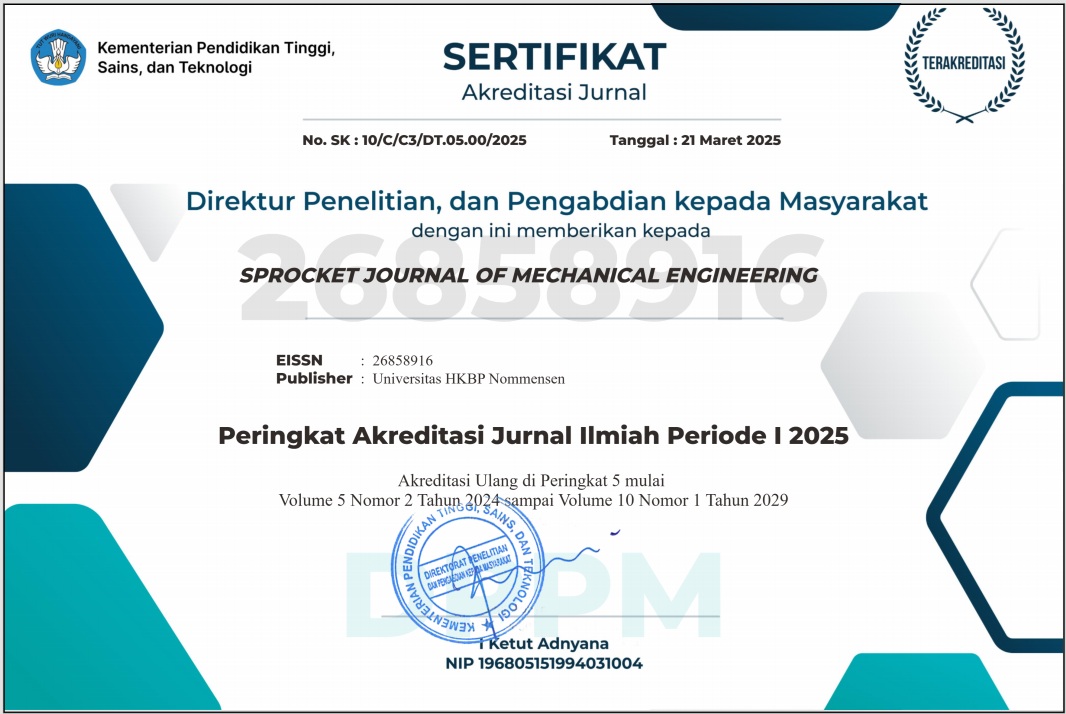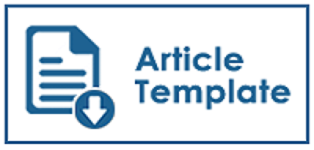Pengaruh Fraksi Berat Serbuk Alumina Terhadap Porositas Busa Aluminium Hasil Injeksi Gas
Abstract
Aluminum foam is a very interesting material to develop. This material is a material that has a combination of characteristics between physical and mechanical properties such as high stiffness and low density. There are several processes for making aluminum foam that have been developed, either through the liquid, solid, or gas phases. And of these various processes, the process of making aluminum foam through the liquid phase by using the gas injection method is the simplest and cheapest process. The principle of the process of making aluminum foam with this method is that bubbles are produced from the process of blowing the gas into the aluminum liquid in which there are additive particles that function as a bubble stabilizer. These stable bubbles will become pores after the aluminum liquid solidifies. This research will discuss the effect of the weight fraction of alumina powder with an average size of 5.77 μm added to liquid aluminum on the macro-pore structure in the form of shape and size as well as the spread of the resulting pores. And the result is that the optimal weight fraction of adding alumina powder is 15%, where the resulting pores have a more homogeneous and evenly shaped and sized.
References
[2] D.X.Sun, Y.Y.Zhao, ”Phase Changes in Sintering of Al/Mg/NaCl Compacts for Manufacturing Al Foams by Sintering and Dissolution Process”, Journal Materials Letters, 59, 2005, hal. 6-10
[3] Y.Y.Zhao, D.X.Sun, “A Novel Sintering-Dissolution Process for Manufacturing Al Foams”, Journal Scripta Mater, 44, 2001, hal. 105-110
[4] Takashi Nakamura, et al., “Development of New Foaming Agent for Metal Foam”, Materials Transactions, Vol. 43, No. 5, 2002, hal.1191-1196
[5] I. Budic, G. Solenicki, “Influencing Parameters on Homogenity of Aluminium Metal Foam AlSi12”, Journal Metabk, 43(4), 2004, hal. 311-314
[6] John Banhart, “Metal Foams-from Fundamental Research to Applications”, Frontiers in design of Materials, 2007, hal. 279-289
[7] John Banhart, “Manufacture, Characterization, and Application of Cellular Metals and Metal Foams”, Progress in Materials Science, 46 (2001), hal. 559-632
[8] J. Banhart, “ Metallic Foams : Challenges and Opportunities”, Eurofoam, 2000, hal. 13-20
[9] Haydn N.G.Wadley, “Cellular Metals Manufacturing”, Advanced Engineering Materials, 4(10), 2002, hal.726-733
[10] M. Ashby, et.al.’ “Metal Foams : A Design Guide”, Butterworth-Heinemann 2000, hal. 8
[11] John Banhart, “Metal Foams : The Mystery of Stabilisation”, Hahn-Meitner Institute-Berlin, 2003.
[12] M. Ashby, et al., “Presentation Workshop on Metal Foams”, NPL Cambidge University, 2000, hal. 9-26

This work is licensed under a Creative Commons Attribution 4.0 International License.
Penulis yang menerbitkan dengan SPROCKET JOURNAL OF MECHANICAL ENGINEERING menyetujui ketentuan berikut :
- Penulis memegang hak cipta dan memberikan jurnal hak penerbitan pertama dengan karya yang dilisensikan secara bersamaan di bawah Lisensi Internasional Creative Commons Atribusi 4.0 . yang memungkinkan orang lain untuk berbagi karya tersebut dengan pengakuan atas kepengarangan karya dan penerbitan awal dalam jurnal ini.
- Penulis dapat membuat pengaturan kontraktual tambahan yang terpisah untuk distribusi non-eksklusif atas versi jurnal yang diterbitkan dari suatu karya (misalnya, mempostingnya ke repositori institusional atau menerbitkannya dalam sebuah buku), dengan pengakuan atas penerbitan awalnya di jurnal ini.
- Penulis diizinkan dan didorong untuk mengunggah karya mereka secara daring (misalnya, di repositori institusi atau di situs web mereka) sebelum dan selama proses penyerahan, karena hal ini dapat mengarah pada pertukaran yang produktif, serta kutipan yang lebih awal dan lebih banyak dari karya yang diterbitkan (Lihat Pengaruh Akses Terbuka ).






.png)
.png)

